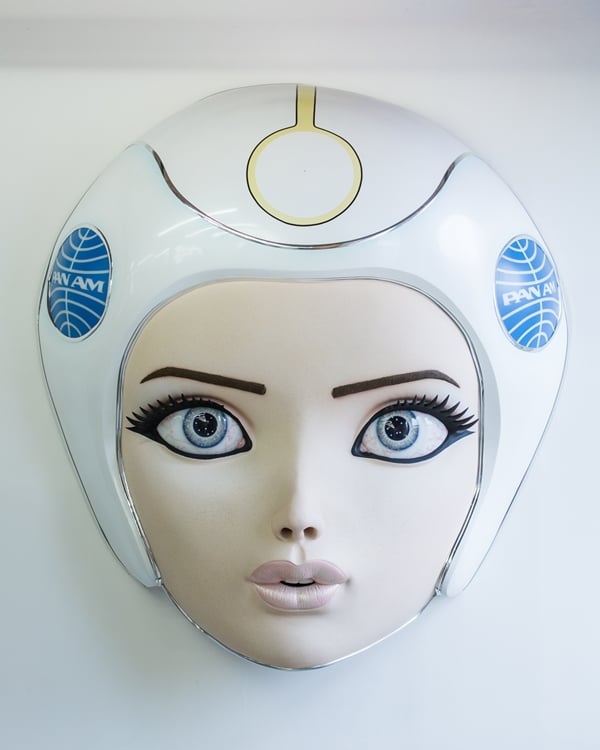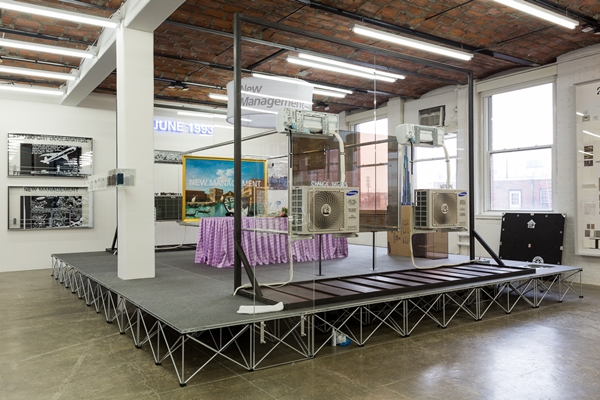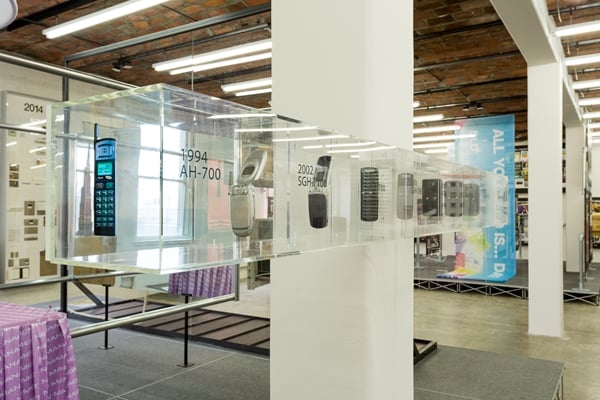Art & Exhibitions
Simon Denny Insists Art Is a Place Where People Want Substance and Depth
For his first US museum show, the artist turned MoMA PS1 into a tech conference.
For his first US museum show, the artist turned MoMA PS1 into a tech conference.
Christie Chu

On the eve of Simon Denny’s first American museum show, “The Innovator’s Dilemma“, at MoMA PS1, the artist seemed more excited than nervous.
And why wouldn’t he be?
The 33-year-old, New Zealand–born, Berlin-based rising star is represented by one of New York’s most reputable galleries, Petzel, and in May he will represent his home country at the Venice Biennale.
Many artists in his generation explore the social and cultural implications of changing technology. Denny belongs in this group, but he goes deeper than most, researching how corporations and individuals consciously look to design devices that alter our understanding and experience of the world. Subjects he returns to frequently include corporate company culture, the tech network, interface graphics, information design, the geo-politics of tech, to entrepreneurship. The work is often nuanced, complex, and hard to fully comprehend.

Installation shot.
Photo: courtesy of the artist and MoMA PS1.
Photo by Pablo Enriquez.
The artist’s MoMA PS1 show features six past major installations presented as a tech trade show. Among the show’s objects, visitors will spot canvases from his show All You Need is Data chronicling the 2012 DLD conference in Munich, a Colin Christian cyborg face from The Personal Effects of Kim Dotcom, the stage set of his TED x Vaduz conference in Lichtenstein, and even early canvas works exploring television set sizes.
The show overall is hard to describe and define, but somehow I feel like I get it or at least a sense there is something interesting enough going on here that I want to get it. I was lucky enough to go on a walk through of the show with the artist, which helped, a lot, but for most people finding the meaning out of this show is going to take some time and effort, probably even a glance or two at the exhibition catalog and wall texts. But what time you put in here will be repaid ten-fold.
The artist told artnet News that his interest in technology started when he moved from New Zealand to Frankfurt in 2007, the year, by the way, the iPhone was introduced.
“At the time I was making physical abstract work, I was interested in Arte Povera. But then I was finding my phenomenological experience was with tech primarily. It was where my home was, it was like my life-line.” Gradually Denny became increasingly interested in technological objects themselves as well as the stories behind them.
His work became heavily research-based. “I like to think I make a visually entertaining space and my work is fun for people to look at. So if you’re only interested in looking at colors, you can still get a lot from my work. But if you want to get involved in things, you can, which I think a lot of people do. Art is a place where people want depth, it’s a place where you can give a lot of rewards.”

Installation shot.
Photo: courtesy of the artist and MoMA PS1.
Photo by Pablo Enriquez.
The artist cites Marcel Broodthaers and Isa Gensken as an influence. He finds their work conceptually rigorous, but at the same time visually enticing.
His work New Management (2014) for instance, is smart and beautiful in its own way. The story behind the work starts in Frankfurt in June of 1993, when the Samsung Corporation Chairman Lee Kun-Hee announced to a room of executives and investors his plan for a shake-up of the company’s old management structure in light of a new hybrid management style combining Japanese and American models. Samsung at the time was extremely popular in Korea, but it wasn’t a global brand. Some 20 years later, many technology devices, specifically mobile phones, have Samsung parts within them—including Apple products.
The artist dove deep into the story of the Samsung initiative, discovering that the company actually built in Korea a shrine-like replica of the Frankfurt hotel room in which the meeting took place to commemorate that historic day for the company. The room is only accessible to top executives, Denny learned, so he made his own version, imagining what the room looked like. From archival images he uncovered during his research, he replicated a painting, flowers on a table, as well as other minor details. The installation also includes ancillary material such as “corporate timelines” like Samsung cellphone models from 1994 to 2014 suspended in a plexiglass box.

Installation shot.
Photo: courtesy of the artist and MoMA PS1.
Photo by Pablo Enriquez.
Denny describes his obsession with Samsung as peculiar, he knows, but indicative of how technology, business, society and culture are so intertwined.
“They [Samsung] have practices implemented that one could question but there is also an amazing achievement, an interesting momentum, and a definite culture force. Good or bad, these things have an impact on culture. You can’t choose your culture, it sort of chooses you. Samsung chose me, I’m a fan of Samsung, I’m a user of it. It has a founding story, it has a cultural history, and nobody was telling it in my world.”
Is his interest in entrepreneurs stem from how he views his role in society as an artist?
He seems to think so, and he doesn’t shy away from admitting his role as an artist involves commerce.”I can personally get a lot from the tools of business analysis and apply it to essentially what is a young business. I’m a self-employed person, I am a business.”
“The Innovator’s Dilemma” at MoMA PS1 is on view from April 3 through September 7, 2015.